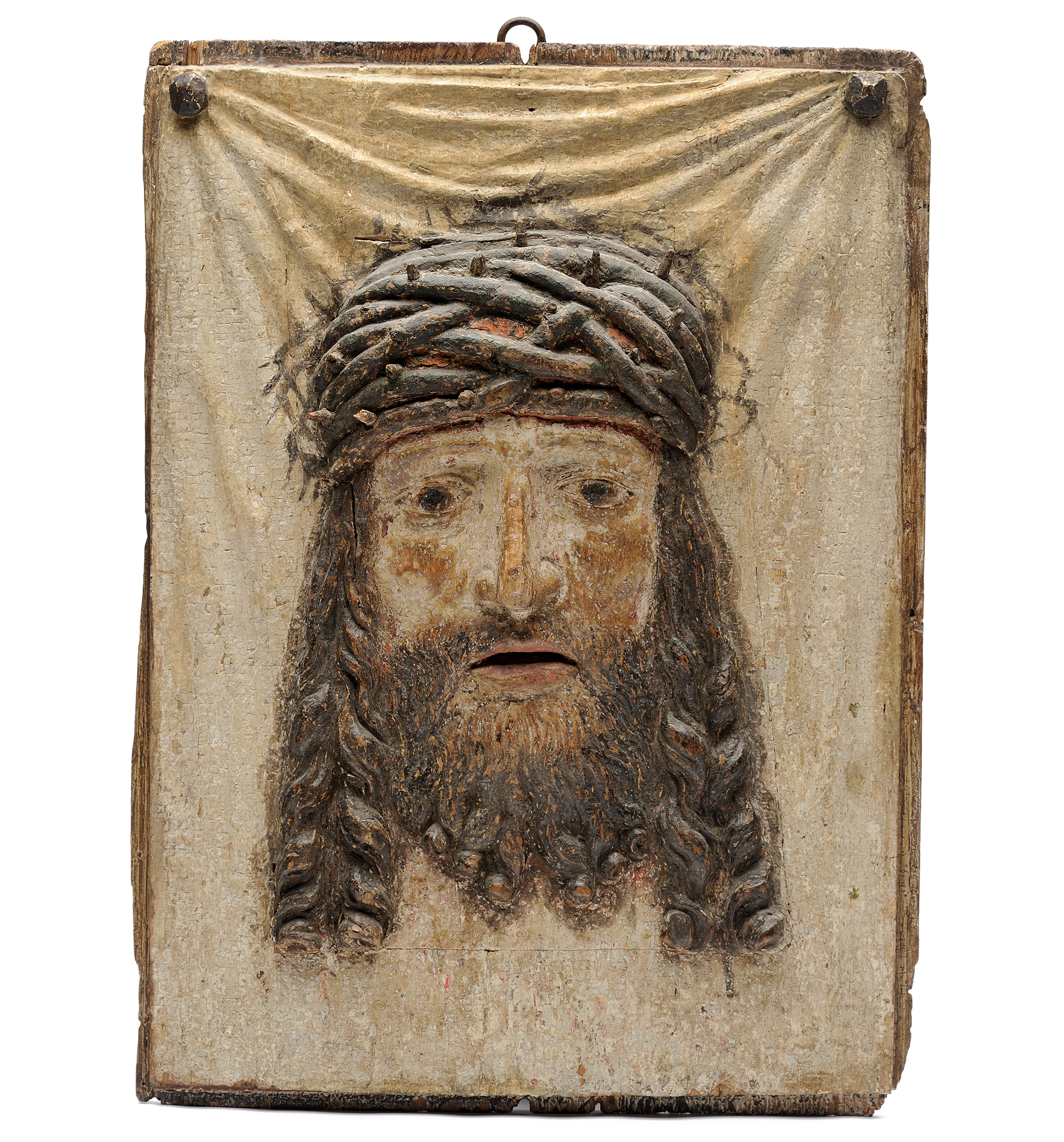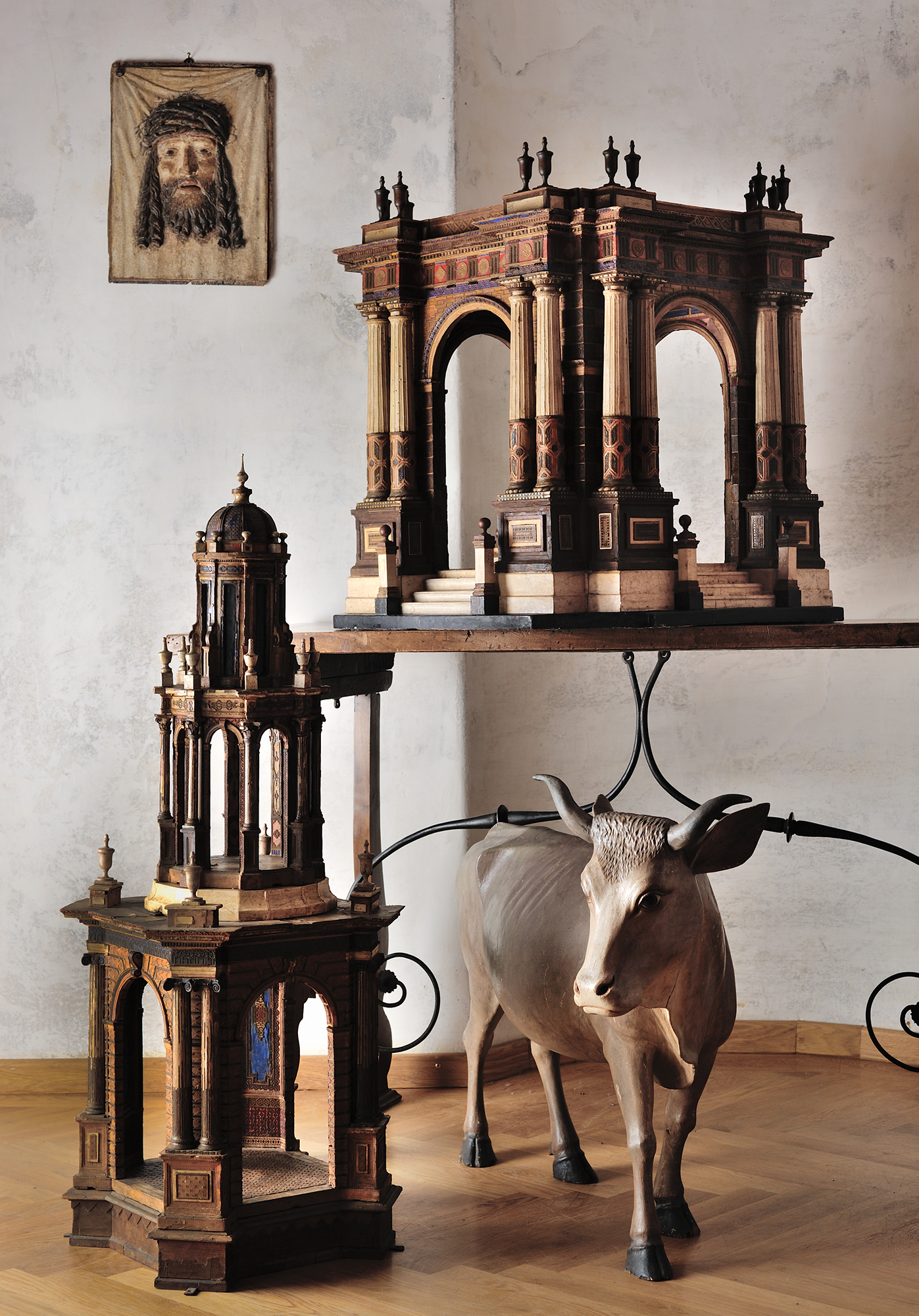Vera Icon
South German, ca. 1520
Pinewood, lime wood, partly painted
H 40 cm, W 30 cm
Please contact us for further information!
The present artwork is an exquisite representation of the veil of Veronica, an example of an acheiropoieton – a holy image not made by man. The veil of Veronica was a common religious theme in the artwork of the Middle Ages and Renaissance and is one of the most important and well-known examples of a vera icon. The term vera icon originates from the Greek word eikon and the Latin word “vera”, meaning “true image.” As a vera icon, the veil of Veronica allegedly represents a real imprint of the face of Jesus Christ from his sweat and blood. According to Christian legend, Saint Veronica in Jerusalem miraculously received the true image of Christ as he walked along the Via Dolorosa to Calvary. The cloth allegedly had wondrous properties, such as the ability to cure diseases, and some versions of the legend recount that it was brought to Rome to be presented to the Roman Emperor Tiberius.
Another example of a vera icon closely related to the veil of Veronica is the mandylion, generally known as the image of Edessa. The mandylion is also an image of Christ “not produced by human hands,” received by King Abgar of Edessa in northern Syria. The king received the image when one of the disciples of Christ, Thaddeus of Edessa, visited him in response to a letter originally written to Christ by the king asking him to heal him of sickness. The image of Edessa is considered to be the first true icon and was first recorded by Eusebius of Caesarea in the 4th century. It is an important holy relic in the Orthodox churches in comparison to the veil of Veronica, which developed into a central icon in the Western Church at the end of the Middles Ages. These miraculous representations of Jesus served to retain the presence of Christ here on Earth and possessed an important function as holy relics and objects of meditation.
Such representations of the veil of Veronica were made of a variety of materials, such as wax, wood and vellum and were commonly found in the form of wall frescos in churches. In western tradition, this popular motif is usually shown with the head of Christ isolated from his body upon a background styled to mimic a cloth that is “hanging” instead of lying flat. Christ is commonly shown with long, wavy hair, as is the case with the present artwork.
This captivating piece is constructed of two pieces of two different types of wood that have been set together: the relief itself is made of a piece of lime wood that has been partly painted and has been set inside a piece of spruce wood. Particularly noteworthy is the unusual representation of the face in high relief, an extremely rare technique. Based on the types of wood used and its artistic form, this artwork is believed to have originated from southern Germany around the year 1520. A similar representation of the veil of Veronica from ca. 1419, although not formed in high relief, can be found in the Museum and Gallery im Prediger in Schwäbisch Gmünd.
Published in: Raum für Objekte - Ariane Laue Kunsthandel, Kat. IV - Nr. 34, Munich 2016



